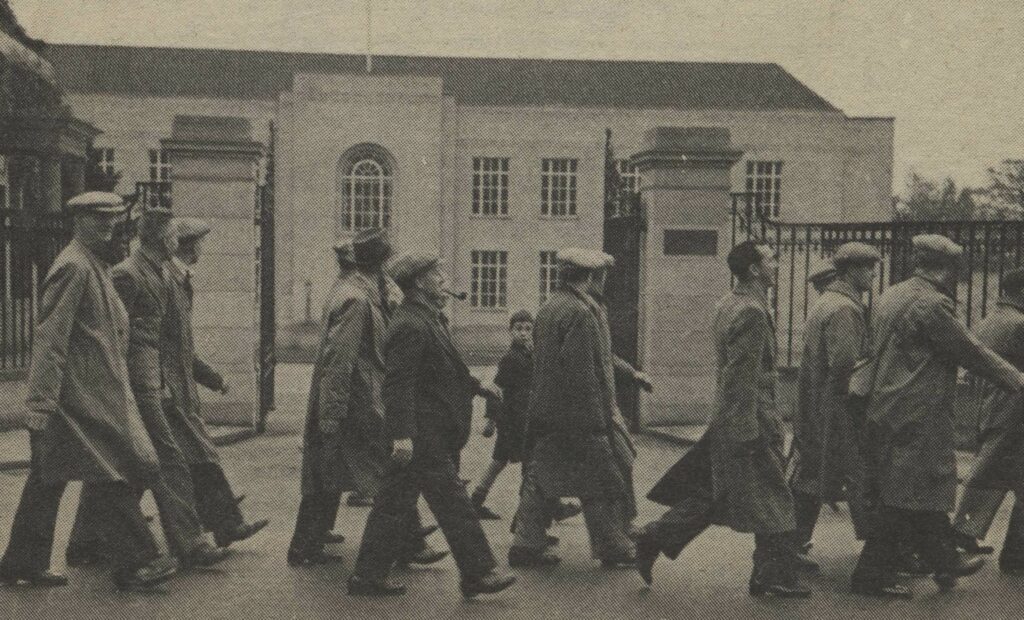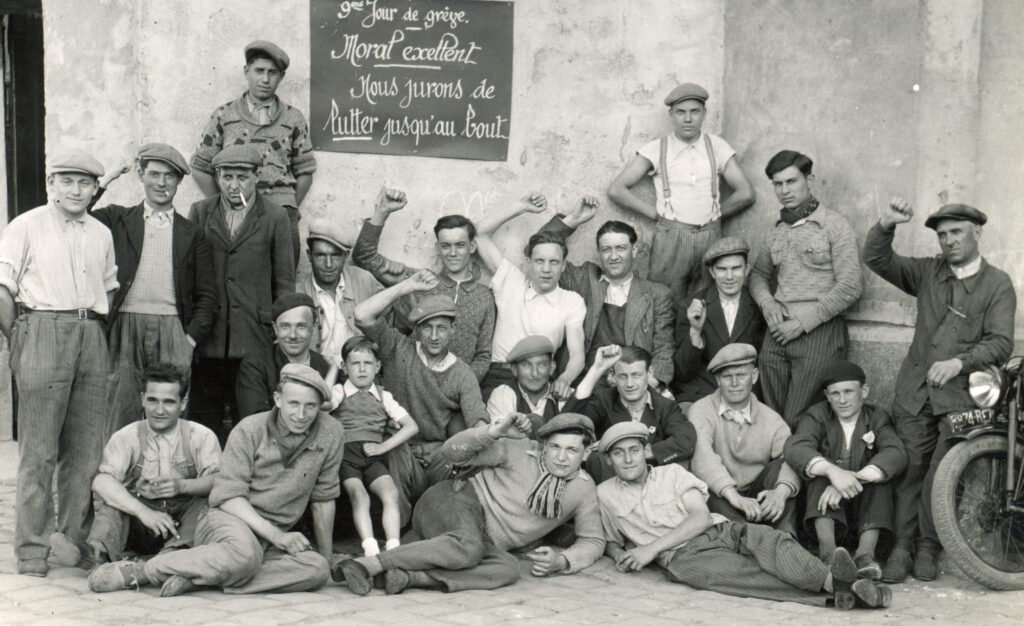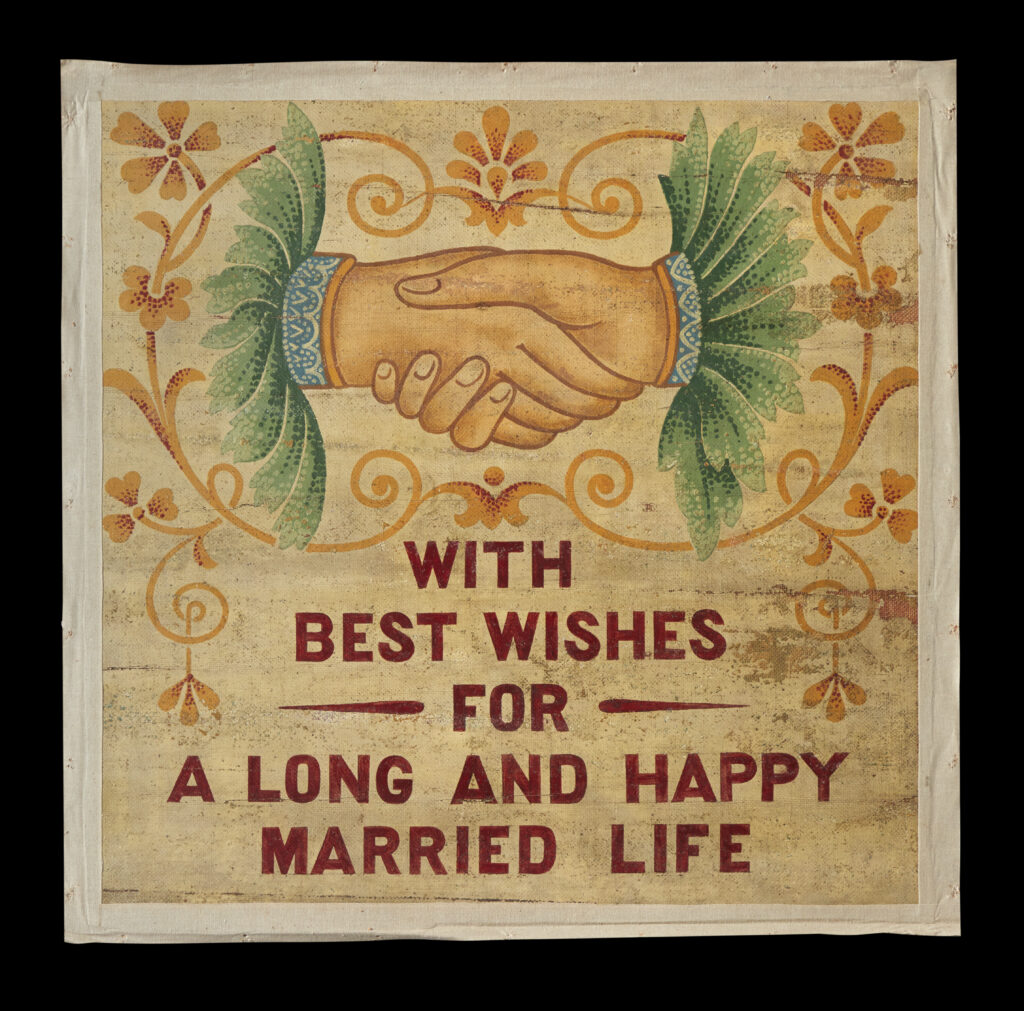A restored prehistoric pot, currently on display in Kirkcaldy Galleries, was discovered when a human skeleton was dramatically exposed by builders behind Kirkcaldy High Street in 1980 in what is now a car park. It is the focus of new research uncovering untold stories of the find and celebrating Kirkcaldy’s Bronze Age heritage.
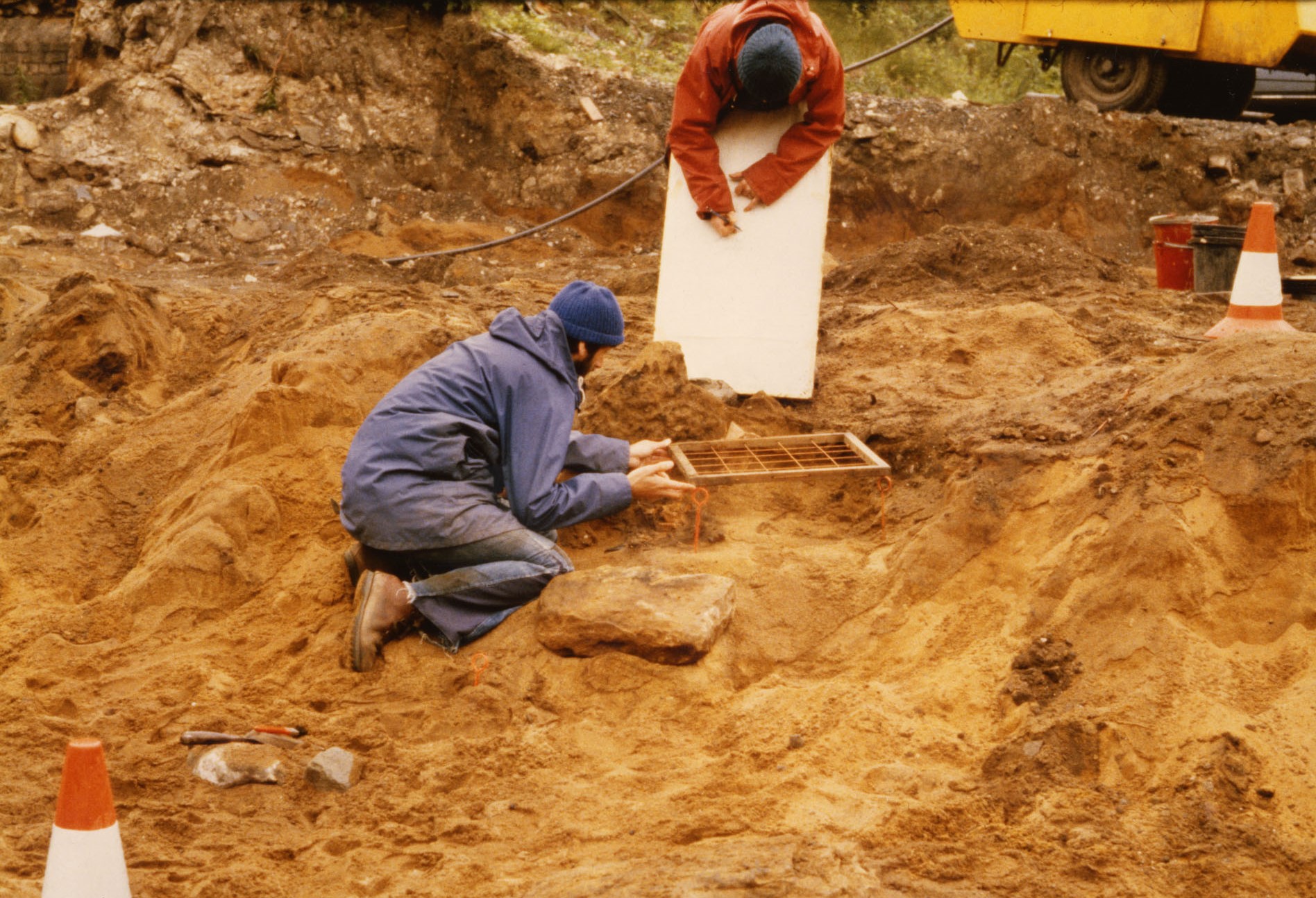
A dig was carried out in Kirkcaldy in 1980. Image: TEMP:2012.4175
Found in large broken pieces, the fired clay pot was first rebuilt in 1980 by archaeologists at The University of Glasgow who undertook the rescue excavation. It has now been fully restored by a conservator thanks to the generosity of the Friends of Kirkcaldy Galleries.
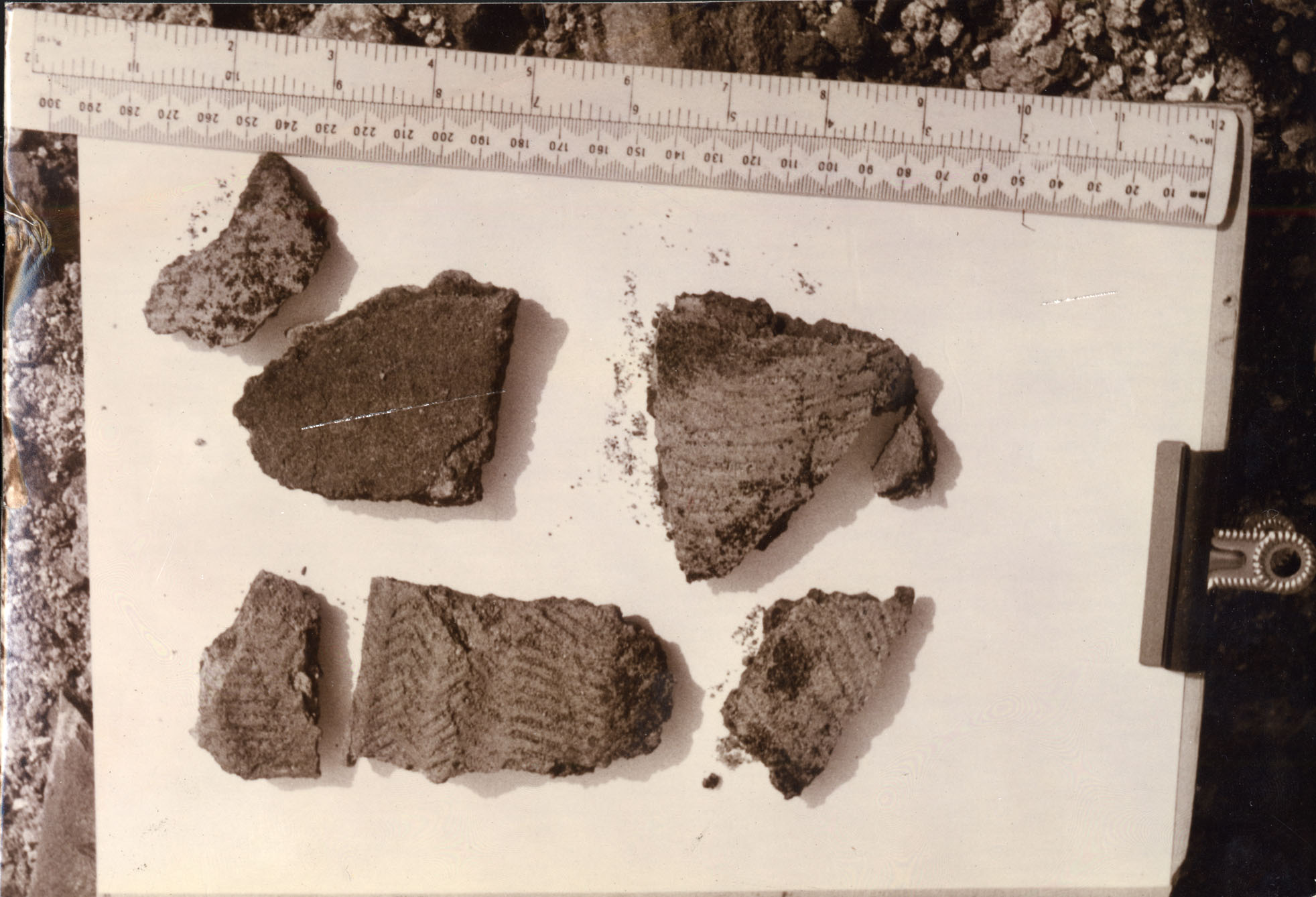
Pot sherds as they were first found. Image: TEMP:2012.4183

The vessel after it was rebuilt by archaeologists at The University of Glasgow in 1980. Image: KIRMG:1981.1819

Vessel, after being conserved at the Scottish Conservation Studio in 2022.
Initially when first discovered the burials was widely reported in the press as being associated with a type of Earlier Bronze Age pottery known as a Beaker. In fact, it belongs to a different contemporary ceramic tradition and the pot is a Food Vessel. Of European origin, Beakers were established here a few centuries before the appearance of Food Vessels, and while the two overlap in time, they are recognized as distinct ceramics associated with apparently different practices. The relationship between these different ceramics and their users continues to be the focus of much archaeological debate. Radiocarbon dating and new analytical techniques such as isotopic analysis are adding intriguing evidence about the lives, health and mobility of the prehistoric people buried with such pots.
As a specialist in this type of pottery, I undertook a detailed examination of the Kirkcaldy High Street vessel ahead of its recent conservation and reconstruction. Found across Scotland, Food Vessels date from 2560-1450 BCE. These pots often accompany both inhumation and cremation burials in purpose-built cists – distinctive rectangular stone constructions – with the deceased. Historically assumed to have served as containers for food for the afterlife or the funeral feast (hence their name), current studies suggest that some of these pots were previously used in domestic settings for the cooking or storage of dairy products.
In terms of appearance, individual pots come in a variety of shapes and sizes. Hand-made each is similar but different, often sharing decorative elements found on other vessels. Most stand 10-25 centimeters tall with flat bases and impressed or incised linear decoration. Around 80% of the original pot survives, it is 16.5 cm high with a rim diameter of 16 cm with traces of coil construction.
The shape of the Kirkcaldy High Street Food Vessel is commonly found throughout Scotland. It has two prominent ridges and an intermediate groove on the shoulder, and a slightly rounded tapering lower body. It is decorated with comb impressions and a common herringbone design around the neck. Similar decorated vessels have been found on other sites in Fife, as well as in most other areas of Scotland. Such common features reveal creative connections among well-connected bronze age communities. The potters were drawing on a shared knowledge of decorative motifs and techniques.
Visual similarities between Beakers and Food Vessels can be seen. These ‘drinking vessels’, while displaying a different range of forms, often feature very similar styles of decoration to those found on Food Vessels. Similarly, Beakers mainly survive in cists but are found more commonly with individual adult burials where the body is lying in a crouched position on one side.
A total of three cist graves were uncovered during the Kirkcaldy High Street 1980 excavations. But only one had a Food Vessel. Human remains were also present in one of the other previously disturbed burial cists. Specialist analysis will soon reveal further insights into the people buried in this small cemetery on an earlier sandy raised beach back in the Bronze Age.
The new research is part of an ongoing project at The University of Glasgow to address unpublished archaeological excavation archives. The original excavator died before completing the original analysis. There is much to uncover from digging through older discoveries in museum stores. Working in partnership with OnFife Collections Curator Jane Freel the project includes events to share the results and celebrate the discovery and the prehistoric past with the local community.
Keen to find out more?
- Visit our window display at Kerry Photography, 243 High Street, the site of the original burial (on display until the end of September).
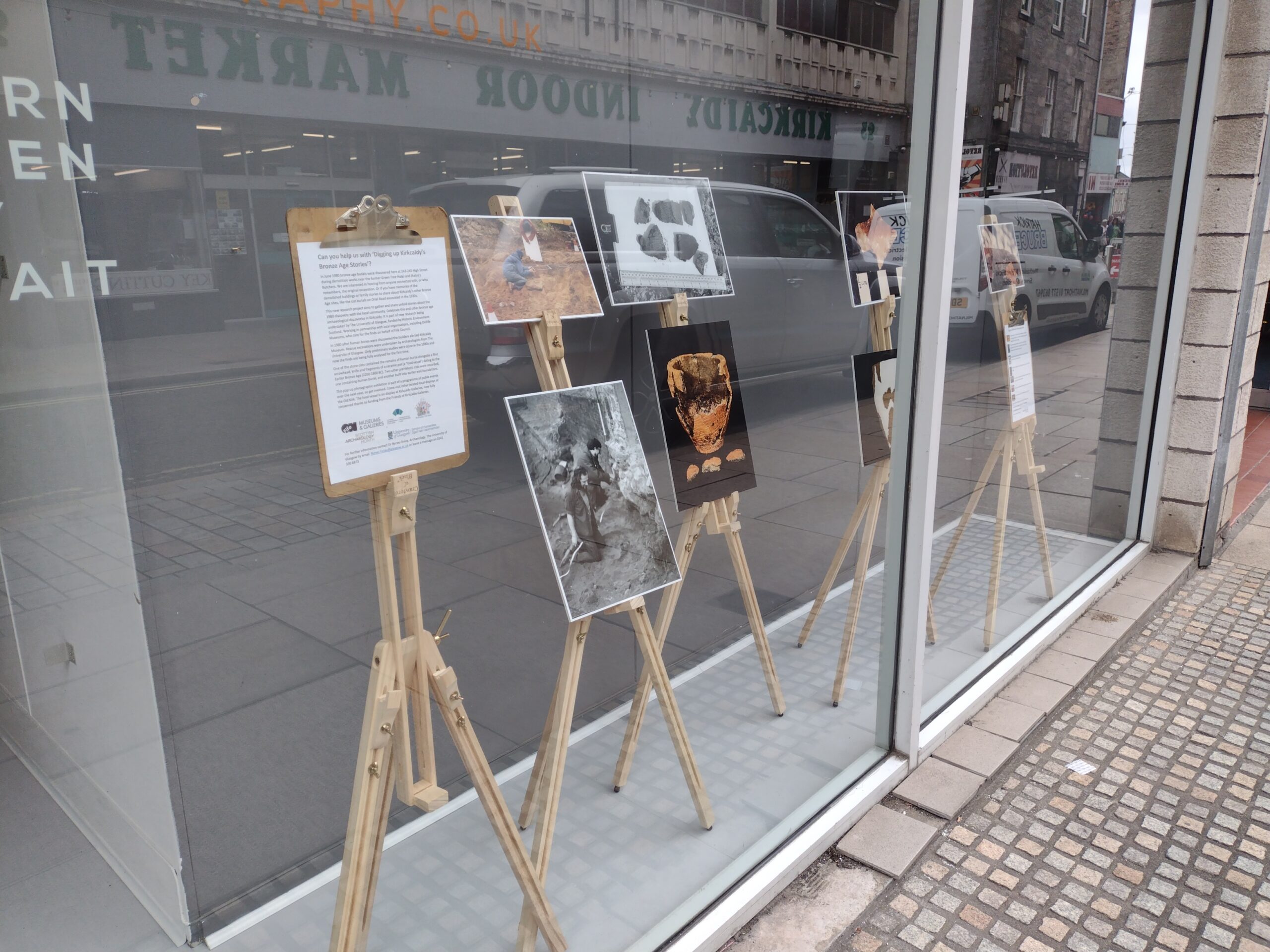
Window display at 243 High Street, Kirkcaldy
_________
This blog was written by Dr Marta Innes – Archaeologist, Freelance British Prehistoric Pottery Specialist and Illustrator


